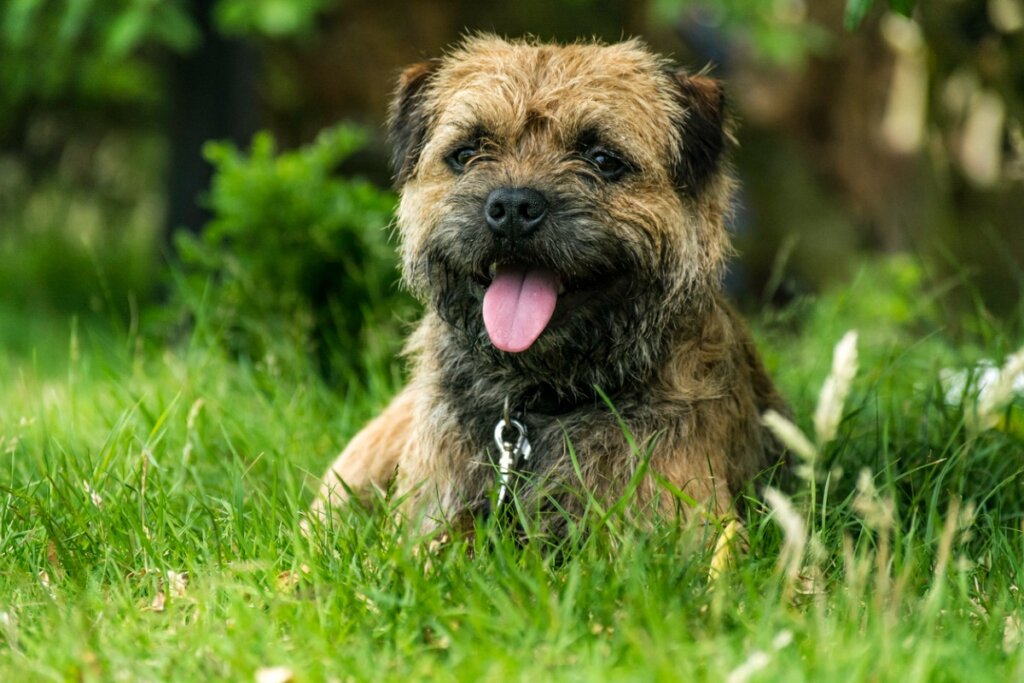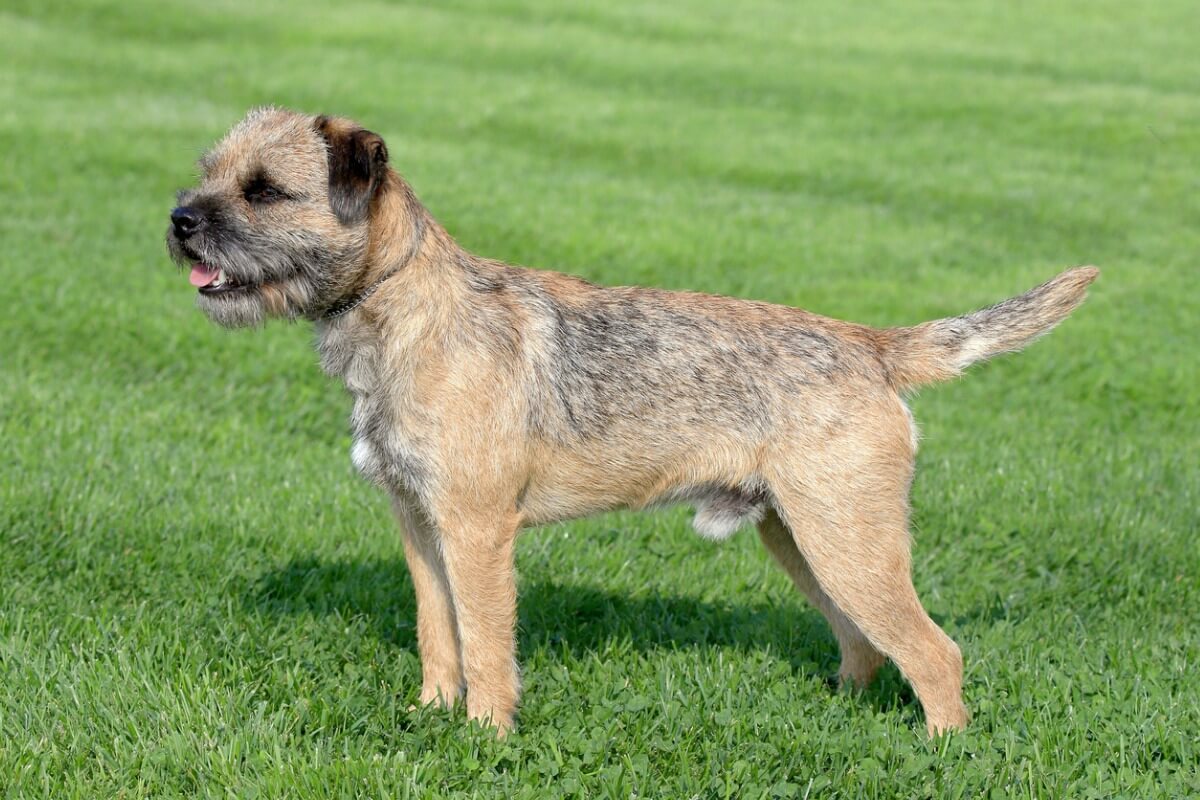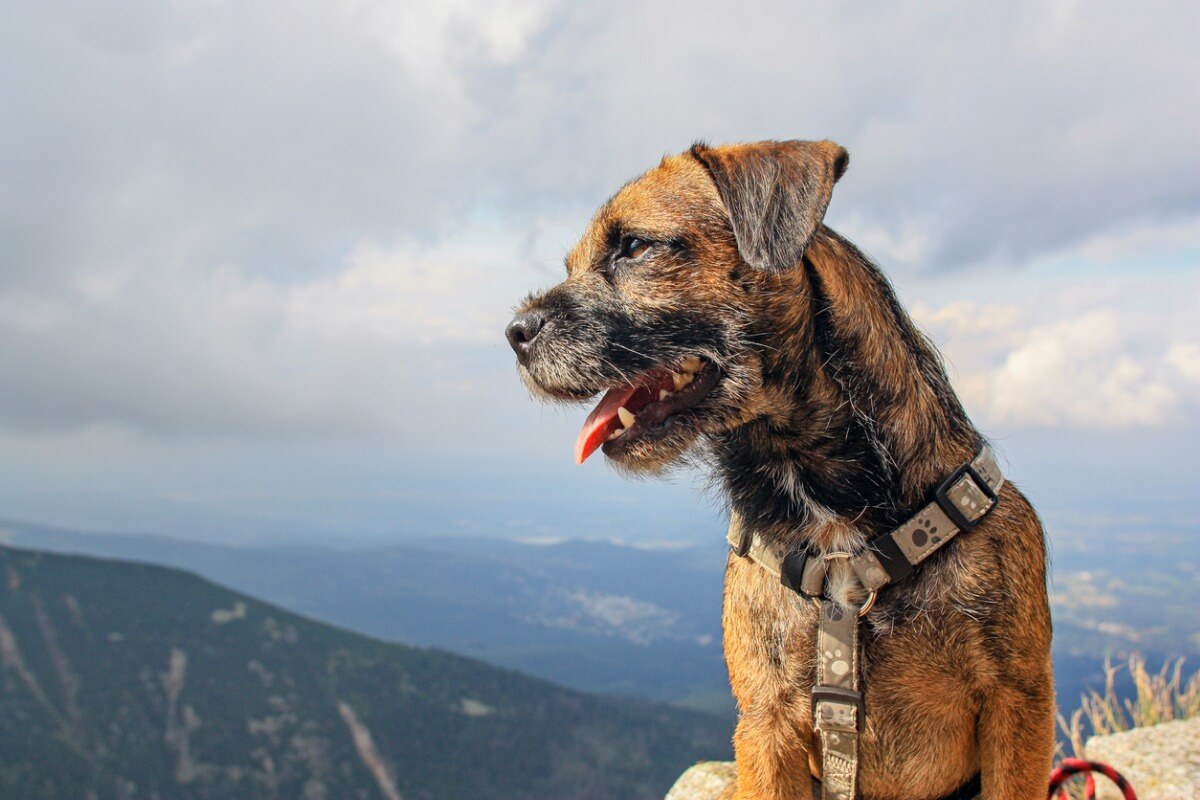Border Terrier: All About this Breed

The Border terrier is an outstanding breed that provides its owners with loyalty and companionship. If you’re looking for a loving and energetic dog, this may be the right one for you.
This breed needs specific care (like all dogs) and it’s important to know everything about it, from its origin to the most common diseases it suffers. Its behavior and other characteristics will tell you how to treat this breed, so be sure to read on!
A bit of history
The Border terrier is a small British breed with a rough coat. It originated in the 18th century in the Anglo-Scottish border area and shares ancestry with the Dandie Dinmont terrier and the Bedlington terrier from the same area.
Experts say that this breed was initially bred by English farmers to combat local problems with foxes. To do this, they needed a dog fast enough to keep up with horses and agile enough to chase foxes wherever they went. It was also used to hunt rodents, otters, and badgers.
A lthough this dog’s coat is short, it stands up well to the weather. Its skin is also strong, so it’s difficult for it to be hurt by its prey (including foxes). For this reason, dogs of this variety carried out their hunting work without much trouble.
This breed was officially recognized by The Kennel Club in Great Britain in 1920 and it wasn’t until 1930 that the first Border terrier arrived in the United States. In the same year, the canine was recognized as a variety of its own by the American Kennel Club.

Physical characteristics
The Border Terrier is a medium-sized breed, neither too small nor too large. The male has an average height of 33 to 40 centimeters (13 to 15 inches) and weighs between 5.9 and 7.1 kilograms (13 to 15.5 pounds).
The female, on the other hand, measures between 28 and 36 centimeters (11 to 14 inches) and weighs between 5.1 and 6.4 kilograms (11 to 14 pounds). In both sexes the life expectancy is 15 years or more.
This breed has a short muzzle and strong teeth. Their V-shaped ears are on the sides of the head and fall towards the cheeks. Common coat colors are grayish, red, or wheaten. It has very few whiskers and the tail is short, thick at the base and tapering. Other physical characteristics worth noting are shown below.
No drooling
One of the great advantages of the Border terrier is that it isn’t a dog that drools in the oral area. In fact, it’s one of the least likely breeds to exhibit this condition.
Weight gain
It’s important to keep in mind that this dog is quite susceptible to gaining weight very quickly if it isn’t exposed to enough physical activity. As a hunting dog, it’s meant to be active, and this is why it’s essential to make sure it gets plenty of exercise.
Behavior
One of the most prominent characteristics of the Border terrier is that it’s a very active and fit dog. This is due to its high energy levels, which is why many owners use it to participate in agility competitions. Some of its most prominent behavioral traits are as follows.
Time to chase
The Border terrier loves to run and chase things, which comes from a desire to hunt that has been instilled in it over the years (both behaviorally and genetically). Because of this, for this dog to adapt to living in small places, it’s crucial for it to spend a lot of time outdoors.
A love of digging
One behavior that some people may find strange at first is the Border terrier’s love of digging. Again, this has an origin in its old hunting training. Its size made it excellent at chasing small animals, especially those that needed to be extracted from their burrows.
Loyal
This dog is quick to define his territory and his friends. It doesn’t like to bark much, but if it finds itself in a threatening or dangerous situation, it’ll bravely defend itself and its loved ones.
Likes to escape
This breed loves to explore and will go to great lengths to make that happen. It will climb walls, dig under fences, climb through wires, and perform many more activities to satisfy its adventurous nature. This is both good and bad, so be prepared to armor your home with escape mechanisms.
Versatile
The Border terrier is adaptable to a variety of environments. It tolerates both hot and cold weather, although it tends to prefer colder environments, which is quite unusual due to its short coat.
This wonderful dog is a great choice as a first pet. It can even easily adapt to apartment living, as long as it gets a good amount of outdoor exercise. Therefore, it’s considered a versatile and adaptable specimen.
It doesn’t like to be alone
This canine takes over both its owners and its territory quickly. In fact, it develops such strong feelings for its owners that it doesn’t like to be alone.
Health
In general, the Border terrier is a fairly healthy breed. However, as is the case with most dogs, it does suffer from some common skin problems. The most important thing is to take care of your dog dermatologically and nutritionally so that it doesn’t run the risk of contracting diseases.
It’s important to note that this dog has a very high pain tolerance. When it was bred, he needed to be able to cope with any attacks from other animals, especially wild foxes. Therefore, it can take a lot of pain or discomfort before showing its vulnerability. This greatly complicates the diagnosis of illnesses at home.
Regular checkups will ensure that your canine is healthy withour having to rely on symptoms.

Now that you know more about this breed, be prepared to deal with a temperamental dog that will need you to be a very dedicated owner to get along with you. Be prepared to groom its coat once a week, and finally, get ready to enjoy its seemingly endless affection and energy.
All cited sources were thoroughly reviewed by our team to ensure their quality, reliability, currency, and validity. The bibliography of this article was considered reliable and of academic or scientific accuracy.
- Border Terriers. (2018, 7 agosto). Border Terriers: Information, Training and Resources. Border Terriers | Useful Information and Resources on Border Terriers. Recuperado 1 de diciembre de 2021, de https://borderterriers.org/
- Wikipedia contributors. (2021, 3 agosto). Border Terrier. Wikipedia. Recuperado 1 de diciembre de 2021, de https://en.wikipedia.org/wiki/Border_Terrier
- Border terrier information, American Kennel Club (AKC). Recogido a 2 de diciembre en https://www.akc.org/dog-breeds/border-terrier/